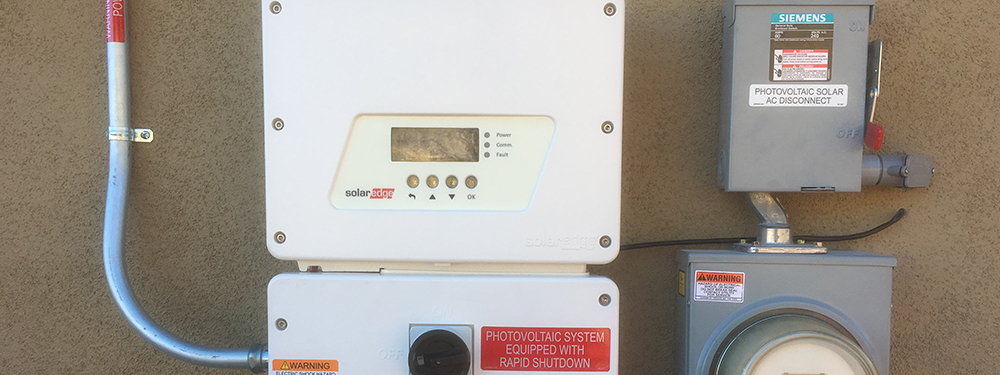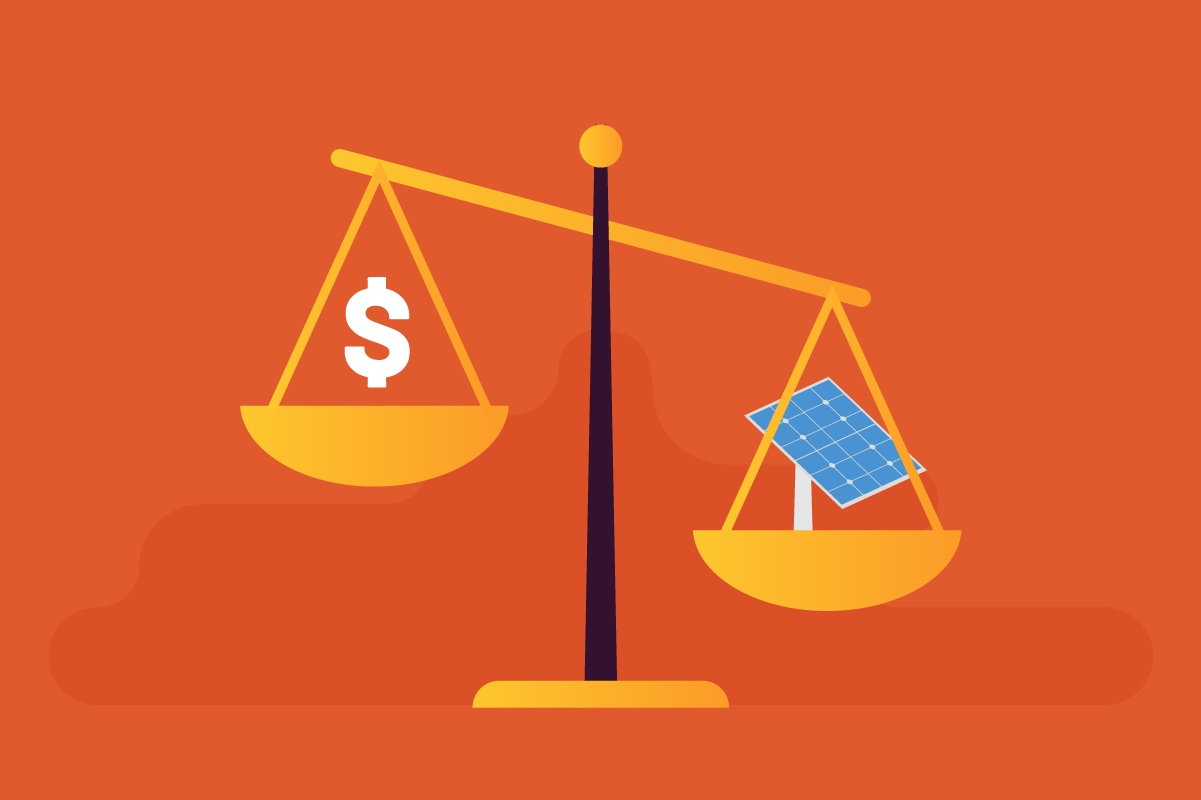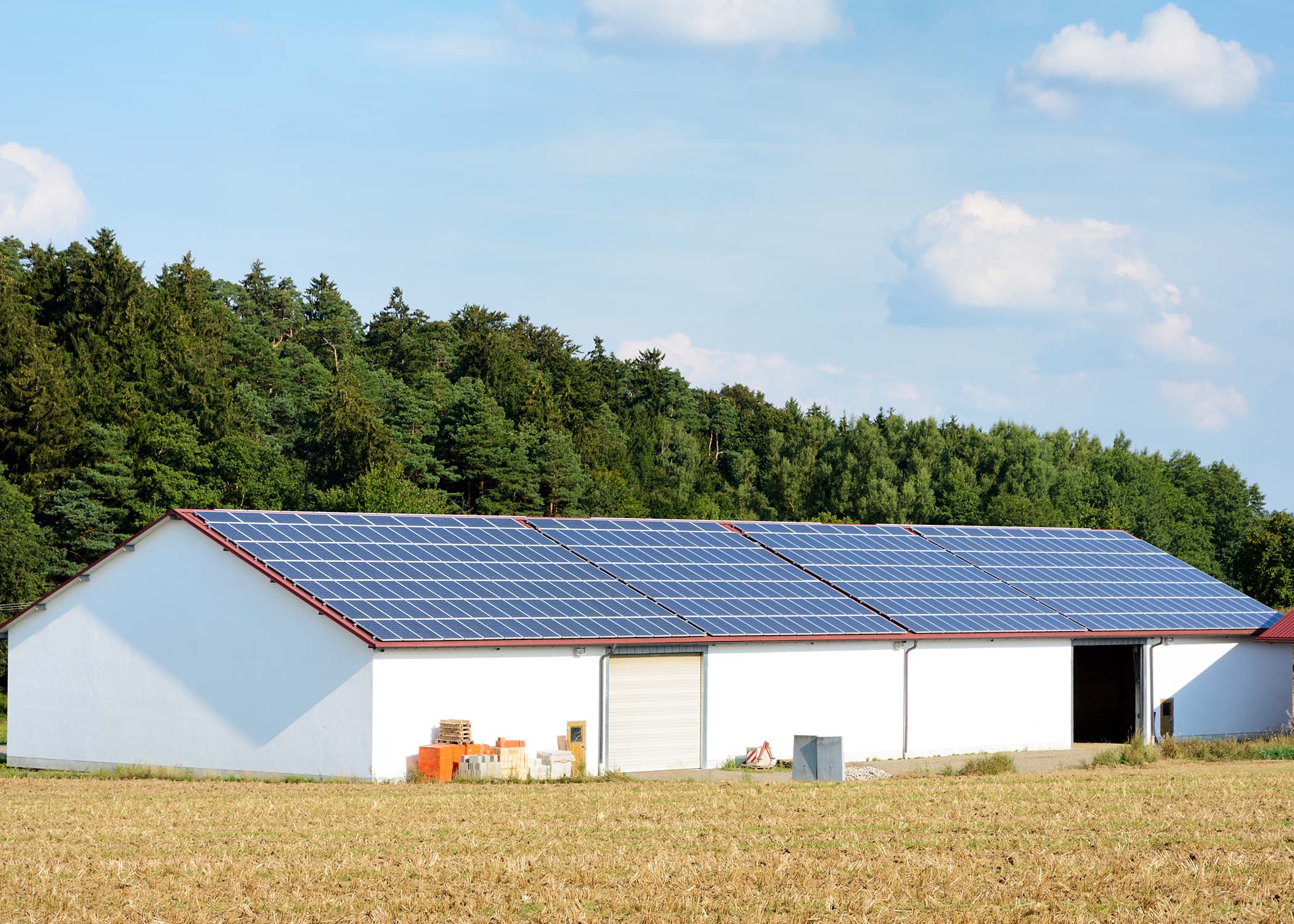Mono vs. Poly Solar Cells: Quick Facts
- Monocrystalline solar cells are more efficient because they are cut from a single source of silicon.
- Polycrystalline solar cells are blended from multiple silicon sources and are slightly less efficient.
- Thin-film technology costs less than mono or poly panels, but is also less efficient. It is mainly used in large-scale commercial applications.
- N-Type cells are more resistant to light-induced degradation than P-Type cells.
- PERC Cells add a reflective layer to give the cell a second oppportunity to absorb light.
- Half-cut cells improve solar cell efficiency by using smaller ribbons to transport electrical current, which reduces resistance in the circuit.
- Bifacial solar panels absorb light on both sides of the panel.
Solar manufacturers are constantly testing new technologies to make their solar panels more efficient.
As a result, solar manufacturing has branched into a wide range of cell technologies. It can be confusing to try to figure out why you should pick one option over the other.
Ever wondered about the difference between monocrystalline vs. polycrystalline solar panels? Or N-type vs. P-type cells? You’re in the right place. This article will give a high-level overview of the major solar cell technologies in play and explain the pros and cons of each.
Monocrystalline vs. Polycrystalline vs. Thin-Film Solar Panels
The first set of terms describes how solar cells are formed out of raw materials.
Traditional solar cells are made from silicon, a conductive material. The manufacturer shapes raw silicon wafers into uniformly-sized silicon cells.
Solar cells can either be monocrystalline (cut from a single silicon source) or polycrystalline (from multiple sources). Let’s look at the differences between the two options.
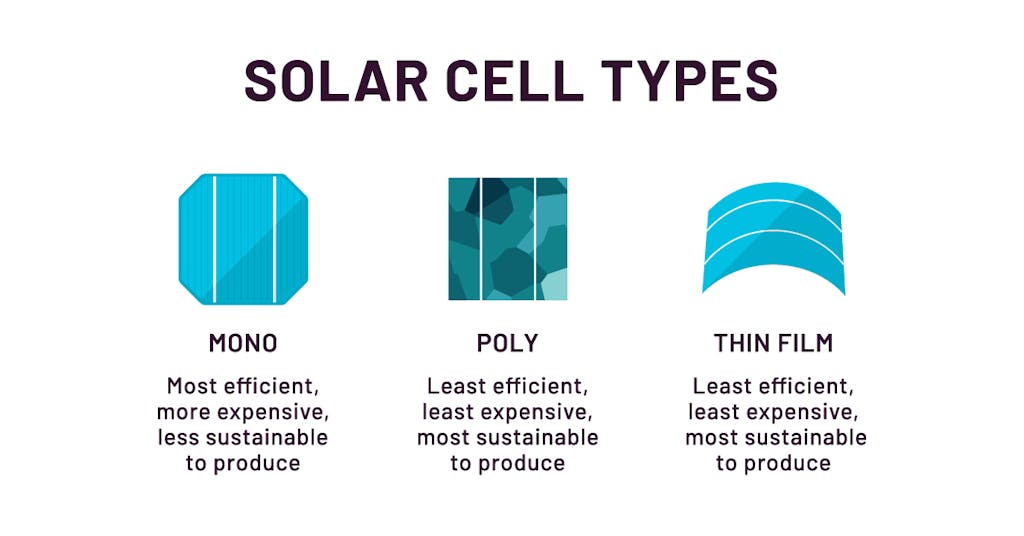
Monocrystalline Solar Panels
Monocrystalline solar panels contain cells that are cut from a single crystalline silicon ingot. The composition of these cells is purer because each cell is made from a single piece of silicon.
As a result, mono panels are slightly more efficient than poly panels. They also perform better in high heat and lower light environments, which means they will produce closer to their rated output in less than ideal conditions.
However, they cost more to produce and that higher cost is passed on to the buyer. Mono panels are a bit more expensive than poly panels of the same wattage.
The manufacturing process for mono panels is also more wasteful than the alternative. Mono panels are cut from square silicon wafers and the corners are shaved off to make the distinct cell shape shown in the picture below.

Lastly, mono panels have a uniform black look because the cells are made from a single piece of silicon. I personally think these look better than poly panels, but obviously, that is just a matter of preference.
Polycrystalline Solar Panels
Polycrystalline solar cells are blended together from multiple pieces of silicon. Smaller bits of silicon are molded and treated to create the solar cell. This process is less wasteful because hardly any raw material is thrown out during manufacturing.
The blended makeup of the cells gives poly panels their iconic blue color. If you look at them up close, you’ll see the texture and color is uneven due to the way the cells are made.

Poly solar panels are slightly less efficient than mono panels due to imperfections in the surface of the solar cells. Of course, they’re cheaper to manufacture which means they cost less for the end-user.
Thin Film Solar Panels
The majority of solar panels deployed today are made from either monocrystalline or polycrystalline solar cells.
There is a third type of solar technology, called thin film panels, which are usually deployed for large-scale utility projects and some specialty applications. Thin film panels are created by depositing a thin layer of conductive material onto a backing plate made of glass or plastic.
Thin film panels typically don’t see use in residential installs because they’re much less efficient than mono or poly panels. With roof space at a premium, residential customers go with more traditional crystalline silicon panels to maximize production from the space available to them.

However, thin film technology is less expensive to manufacture, and it becomes a more cost-effective option at a larger scale. For commercial and industrial projects without any space restrictions, the lower efficiency of thin film technology doesn’t really matter. Thin film panels often end up being the most cost-effective option in these situations.
In addition, if you’ve ever seen flexible solar panels on an RV or boat, thin film technology is what makes those possible.
Because they are (as the name implies) much thinner than a traditional silicon wafer, the thin film can be deposited onto plastic to create flexible solar panels. These panels are especially nice for RVs and mobile use when you might not have a flat surface to mount the panel.
N-Type vs. P-Type Solar Cells
The previous section covers the process by which raw material is formed into silicon wafers.
This section has to do with the process by which those wafers are treated to turn them into a functioning solar cell that can generate an electrical current.
What are P-Type Solar Cells?
P-type cells are usually built with a silicon wafer doped with boron. Since boron has one less electron than silicon, it produces a positively charged cell.
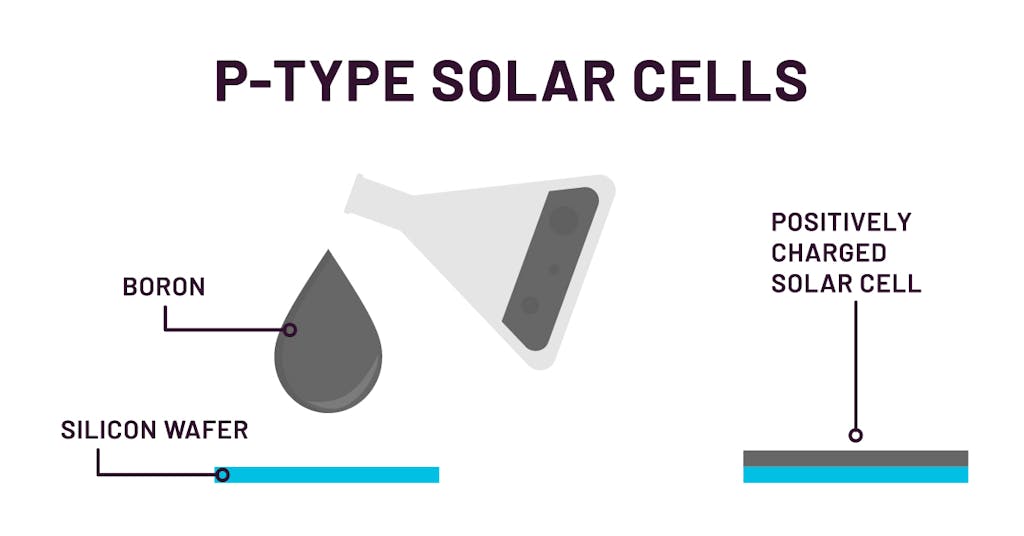
P-type cells are affected by light-induced degradation, which causes an initial drop in output due to light exposure. This has historically been the most common treatment method for solar cells.
What are N-Type Solar Cells?
N-type cells are doped with phosphorus, which has one more electron than silicon, making the cell negatively charged.
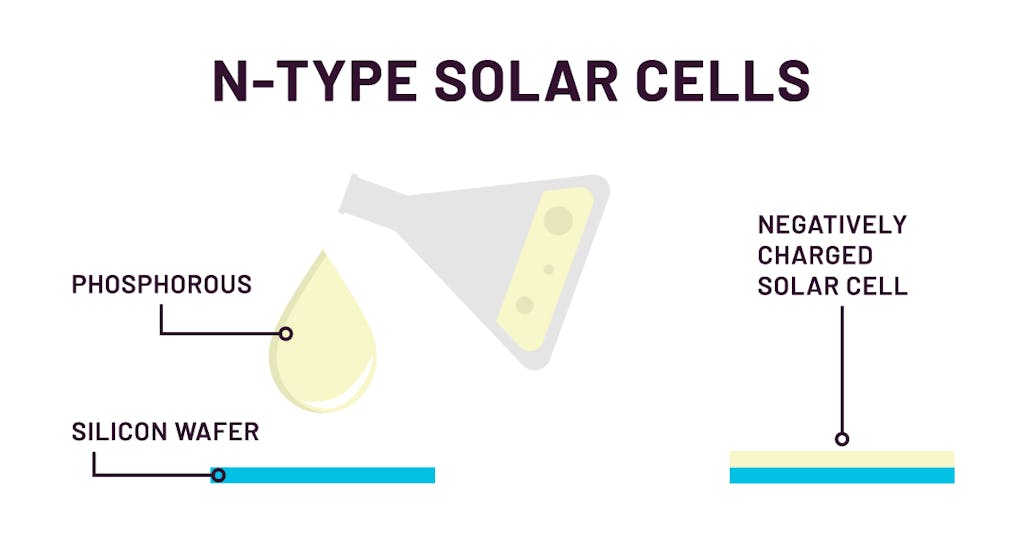
N-type cells are immune to boron-oxygen defects, and as a result, they are not affected by light-induced degradation (LID). As you might expect, these are positioned as a premium option because they degrade less over the life of the panel.
Here are a few examples of N-type panels:
N-Type Solar Panels
Most of the panels we sell use P-type cells, which can degrade a little faster, but still perform well for 30+ years.
When you consider the lower cost of P-type cells, it typically pays to go with a cheaper module that degrades a little more, as opposed to a substantially more expensive panel with slightly less degradation. But that assessment may change as N-type technology advances and costs drop over time.
Other Differences in Solar Cell Technology
PERC Cells
PERC stands for Passivated Emitter and Rear Cell technology. PERC cells are distinguished by an extra layer of material on the backside of the solar panel, called the passivation layer.
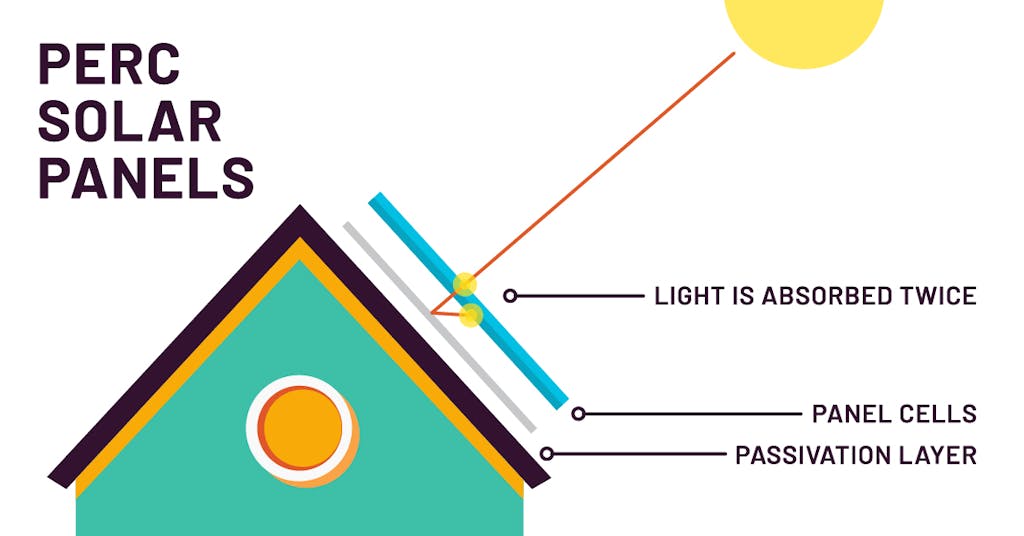
Think of the passivation layer like a mirror. It reflects light that passes through the panel, giving it a second chance to be absorbed by the solar cell. More solar radiation is absorbed by the cell, which results in a higher efficiency panel.
PERC cell technology is gaining traction because the inclusion of the passivation layer doesn’t add huge manufacturing delays or expenses. The efficiency boost more than justifies the extra step in the manufacturing process.
Aleo Solar has a good article that gives more context on the history of PERC technology as well as more technical info about how it works.
PERC Solar Panels
Half-Cut Cells
Half-cut cells are exactly what they sound like: solar cells cut in half.
The smaller size of half-cut cells gives them some inherent advantages, mainly (you guessed it) improved efficiency over traditional cells.
Solar cells transport electrical current through ribbons that connect neighboring cells in a panel. Some of this current is lost due to resistance during transport.
Because half-cut cells are half the size of a traditional cell, they generate half the electrical current. Lower current between cells means less resistance, which ultimately makes the cell more efficient.
In addition, half-cut cells can be more shade-tolerant. When shade falls on a solar cell, it not only reduces the production from that cell, but every other cell connected to it in series as well.
A traditional solar panel may have 60 solar cells, wired in series. If shade falls on one series of cells, you can lose one-third of that panel’s production.
In contrast, a panel made of half-cut cells would have 120 half-cut cells, wired in series/parallel with two strings of 60 cells. Shade that falls on one string would not affect the output of the other, which minimizes production loss caused by shading issues.
Bifacial Solar Panels
Bifacial solar panels are panels that are treated with conductive material on both sides. They’re designed to take advantage of reflected sunlight that hits the backside of the panel.
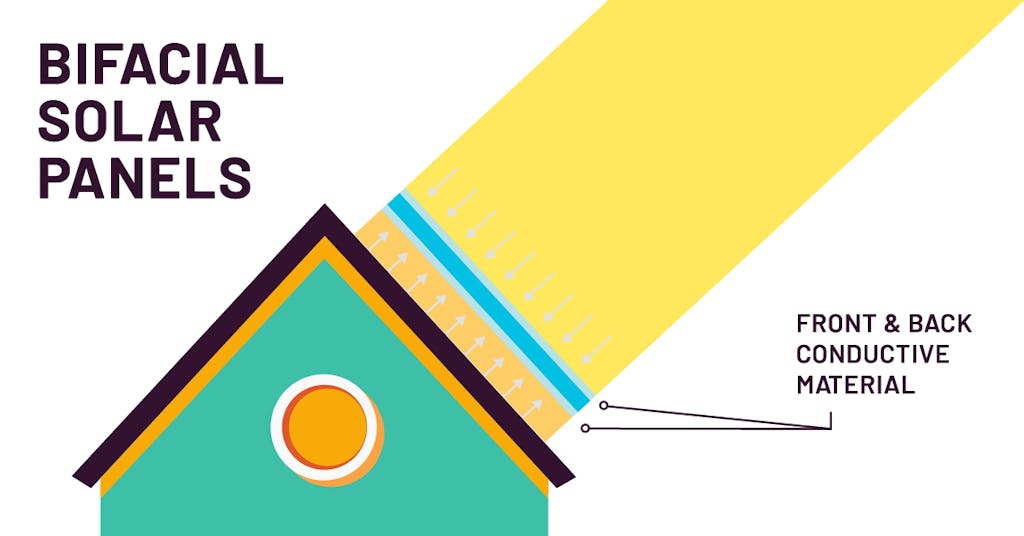
In theory, this sounds like a great idea because you are doubling the conductive surface area of the panel. But in practice, bifacial panels call for a much more expensive mounting setup to get any real benefits from the technology.
The system needs to be mounted in an elevated position so that there is clearance below the array. It also calls for the right reflective material beneath your array, like white rocks below a ground mount or a white roof.
Bifacial panels are significantly more expensive to install, and at this point, the minor efficiency gains don’t do enough to recoup the extra installation costs. Bifacial panels aren’t quite ready for the limelight, though that may change as the technology develops further.
Which Panels Should I Choose For My Project?
You might be feeling some information overload right now. It’s nice to understand the nuances of the manufacturing process, but ultimately there’s one question on everyone’s mind: “which one should I buy?”
Our advice is always this: look at cost-per-watt and go from there.
To make a fair comparison between products, divide the panel cost by its rated wattage. The result tells you how much power you will generate per dollar you spend. For example:
- Astronergy 365W solar panel: $257 / 365W = 70 cents/watt
- Mission Solar 385W solar panel: $319 / 385W = 82 cents/watt
Going with Mission Solar would mean fewer panels in your array, but the overall system will cost more due to the higher cost-per-watt on the panels. (Both of these are mono solar panels. In this case, the price difference is because Mission Solar panels are made in America and Astronergy is imported from overseas.)
Once you evaluate pricing on a level playing field, then consider whether other factors (like cell technology or country of origin) play a factor in your decision.
For more info, check out our free solar panel buying guide.


